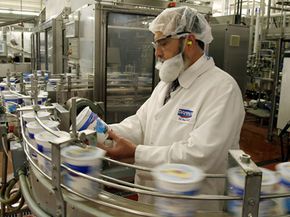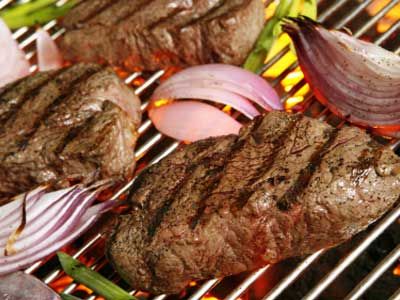Yogurt has been around since at least 2000 B.C. in the Middle East [source: Koenig]. If you think about what yogurt is at its core -- simply fermented milk -- it makes sense. Fermenting milk is a way of preserving it, and there were no refrigerators around in ancient times.
The acidic, or tart, taste of yogurt results from this fermentation. When milk is heated to produce yogurt, the harmful bacteria die. Several "good bacteria," though -- the ones that fortify the digestive tract and aid in healthy bodily functions -- survive the heat. Two of the most common "active" (living) yogurt bacteria, Streptococcus thermophilus and Lactobacillus bulgaricus, react with fermenting lactose to produce acid during the yogurt-making process. This acid acts as a preservative, since disease-causing bacteria can't grow in acidic conditions.
Advertisement
Centuries after it became possible to preserve milk with cooling systems, yogurt is still around. This is partly because lots of people love the taste. But it's also because the living bacteria in yogurt are healthy, as long as the yogurt contains "active cultures," which means these good bacteria are still alive. You can buy these yogurts at the store, of course, although you have to check and see if they contain live cultures, since some yogurts are pasteurized to extend shelf life, and pasteurization by definition kills bacteria. To be sure you're getting the good stuff, though, and to save some money if you're a big yogurt fan, making your own at home can be a great choice.
It's not very hard, and you don't even have to go out and buy a special "yogurt maker." In this article, we'll take you through the most basic yogurt making process from start to finish, and then we'll find out how you can customize your yogurt to suit your specific tastes.
We'll begin with laying out the equipment. You've probably already got almost everything you need in your kitchen right now.
Advertisement





